
National Hispanic Heritage Month
National Hispanic Heritage Month Month is an annual celebration of the history and culture of the U.S. Latinx and Hispanic communities. The commemoration, September 15 to October 15, observes how these communities have shaped and influenced American society. The term Hispanic or Latino (or the more recent term Latinx) refers to a person’s culture or origin—irrespective of race. “On the 2020 Census form, people were counted as Hispanic or Latino or Spanish if they could identify as having Mexican, Mexican American, Chicano, Puerto Rican, Cuban, or ‘another Hispanic, Latino, or Spanish origin.’” To read more see the recent History newsletter’s “Hispanic Heritage Month” at https://www.history.com/topics/hispanic-history/hispanic-heritage-month. The term Latino is used in this blog.
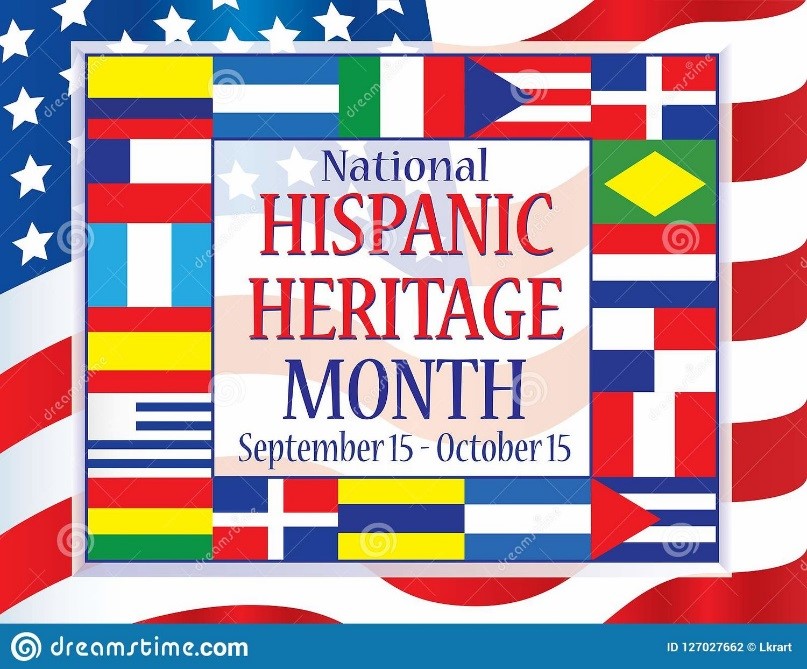
As we enter the last days of the 2020 election, it seems appropriate to take a brief look at voter suppression of Latino and other minorities.
Voter Suppression Tactics
In the current election Latinos, Blacks, Native Americans, Asians and other minority groups across the country are facing various voter suppression tactics, especially as white Americans comprise a diminishing portion of the US electorate. According to the Pew Research Center, about 32 million Latinos are expected to be eligible to vote in the 2020 November general election, making them the country’s biggest minority voter group. They will exceed eligible Black voters for the first time.
Some examples of voter suppression tactics targeting Latinos are: voter restrictions that disproportionally disenfranchise Latino voters; voter intimidation; election disinformation; demanding voters have particular photo IDs; purging voter rolls; racial gerrymandering; holding whites-only primaries, barring people from voting based on whether they speak English; complicated voter guides; limitations on early and absentee voting; and closing and limiting voting locations in minority locations. The latter leads to longer wait lines for minorities.
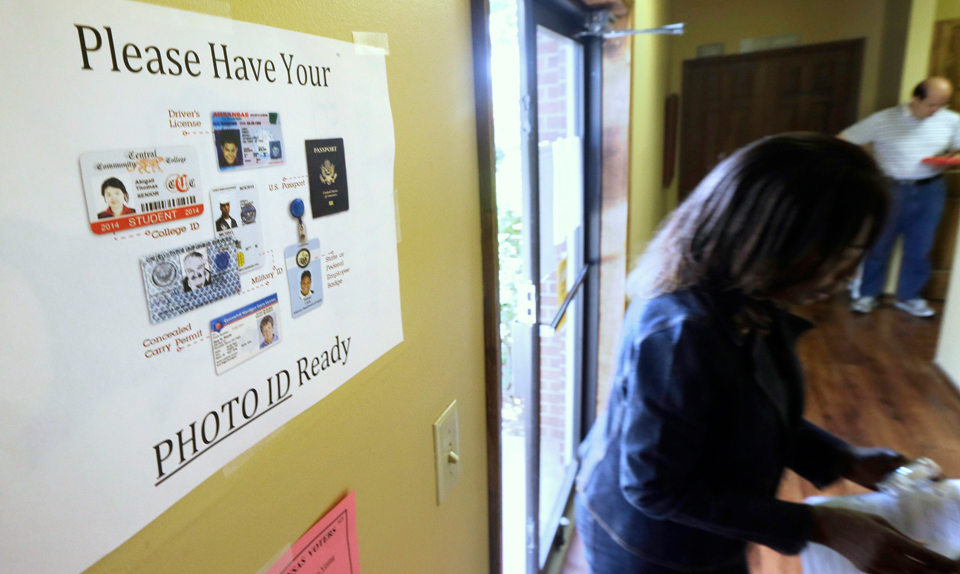
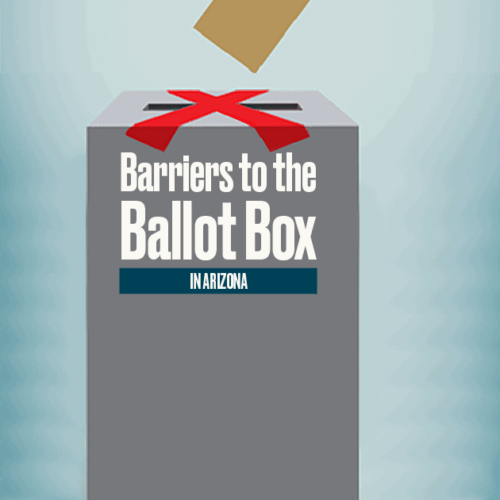
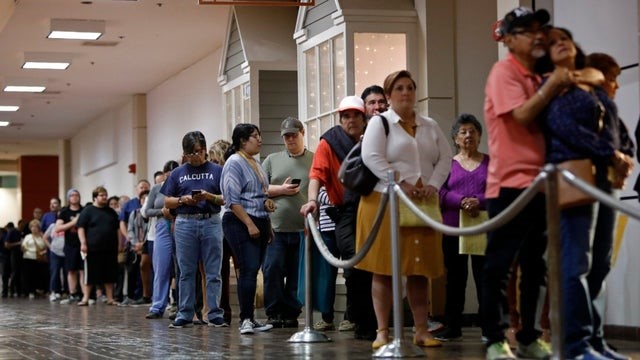
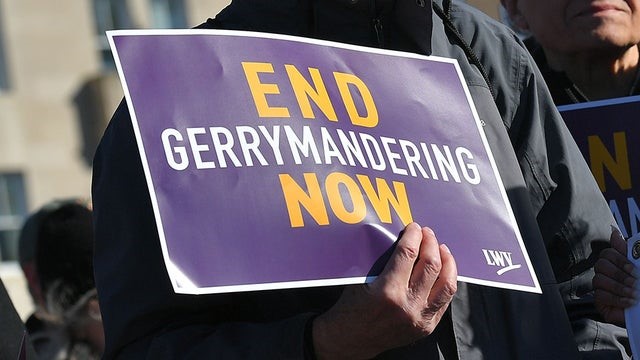
Arturo Vargas, president of the National Association of Latino Elected and Appointed Officials Educational Fund remarked, “And then there are unintentional ones that result in discouraging voters, for example, cutting down on the early voting period so that there is less voting.” The COVID-19 pandemic in the midst of this election only makes matters worse. In Northeast Ohio’s Hispanic community there is a strong push to get out the vote. See WKYC’s broadcast “Local Hispanics encourage voters within their communities” at https://wkyc.com/embeds/video/95-ba1c57a3-03f3-4ccc-b707-70898d31e22d/iframe?jwsource=cl.
2000 Presidential Election
Voter suppression of Latinos, Blacks, Native Americans, Asians and other groups is nothing new. We only have to look back to the Jim Crow era. It was evident more recently in the 2000 presidential election between Republican George W. Bush and Democrat Al Gore. After forty-nine states tallied their ballots, the candidates were tied. The fate of the election rested on Florida’s Electoral College votes. In One Person, No Vote: How Voter Suppression Is Destroying our Democracy, Carol Anderson states, “Florida, however, was a festering election cesspool—as racially backward as it was bureaucratically inept.” Secretary of State Katherine Harris had employed flawed data to expunge some 20,000 names, primarily of Blacks and Hispanics, from the voter rolls. Voter intimidation was used too. Anderson explains, “the final tally even with the massive disfranchisement effort to keep Blacks and Hispanics from voting, was still too close to call.”

The Supreme Court stopped the Gore-requested ballot recount, ruling it violated the Fourteenth Amendment. Bush was elected president. Nation-wide 62 percent of Hispanics, 90 percent of Blacks, and 55 percent of Asians voted for Gore. Anderson argues the “ease with which the U.S. Supreme Court overturned a federal election, ignoring blatant violations of the Fifteenth Amendment and swaddling it all in the language of the Fourteenth Amendment’s equal protection clause” was…[one]…element that laid the groundwork for gutting the Voting Rights Act….” Anderson asserts that the “disappearing minority voter” in the 2016 presidential election is “the campaign’s most misunderstood story.” While it is “true that…Black voter turnout…dropped by 7 percent overall” and that “less than half of Hispanic and Asian American voters came to the polls,” she contends it was voter suppression of these minorities, which blocked turnout, sealing the fate of the election. Voter suppression laws had “spread like a cancer throughout” the country.Anderson wrote the crafter, Paul Weyrich, “was brutally clear: ‘I don’t want everybody to vote.’”
The Voting Rights Act
What is the Voting Rights Act? President Lyndon B. Johnson signed it into law during the peak of the Civil Rights Movement. Congress amended the act five times, expanding its safeguards. Intended to implement the voting rights guaranteed by the Fourteenth and Fifteenth Amendments, the act ensured the right to vote for racial minorities across the nation, particularly in the South. Section 2 is a broad provision, prohibiting every state and local government from enacting any voting law, resulting in prejudice against racial or language minorities. Other provisions ban literacy tests and comparable strategies that were employed historically to disenfranchise racial minorities. The act also included “special provisions,” applying to particular jurisdictions. A fundamental provision was the Section 5 “preclearance” requisite. Preclearance subjected states with questionable or “checkered” voting rights histories, from making any change concerning voting without receiving the U.S. attorney general or the U.S. District Court for D.C.’s preapproval that the change did not discriminate against protected minorities.
Gutting The Voting Rights Act
Voter suppression efforts have increased since Shelby County, Alabama v. Holder. In that 2013 landmark decision, the Supreme Court in a 5-4 decision struck down the “preclearance” section of the Voting Rights Act. The majority led by Chief Justice Roberts “declared that while the Voting Rights Act once had been necessary, it was no longer needed and was therefore unconstitutional because it placed too much of a burden on the states.” In writing the dissent, Justice Ginsburg said: “Throwing out preclearance when it has worked and is continuing to work to stop discriminatory changes is like throwing away your umbrella in a rainstorm because you are not getting wet.”
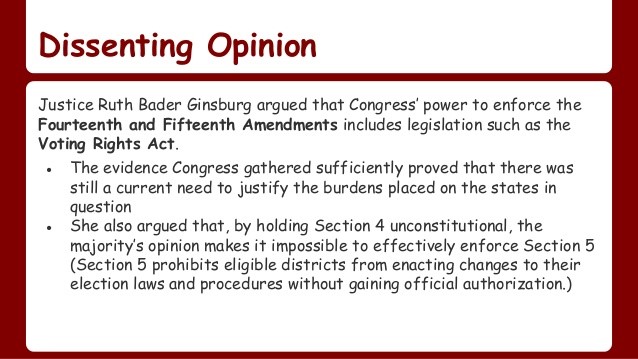
Local and state governments no longer need federal approval (preclearance) to enact voting or election laws. Click on the link below for more information.

Vargas explained, “…[W]ithout federal oversight, local governments may adopt restrictive voting practices.” Within twenty-four hours of the Supreme Court’s decision, Texas, Mississippi and Alabama imposed stringent voter ID laws. For instance, Texas permits only specific forms of ID like a gun permit, but not a college ID card, which many young voters have. “Texas has a long history; it’s the state that has the most pronounced, overt, racist voter suppression tactics that we know of,” opined Lydia Camarillo, president of the Southwest Voter Registration Education Project. Latinos comprise almost 40 percent of the state’s population and are expected to be largest population group by 2021. Beto O’Rourke, a former presidential candidate and former congressman, commented, “For 144 years, Texas has perfected the science of suppressing voters at the ballot box.” Without federal government oversight Texas has become a national leader in reductions of polling sites, according to a study by The Leadership Conference Education Fund.
O’Rourke believes Texas’ penchant for gun permits over college IDs is part of an “infrastructure of suppression.” An initial form of the law was found to intentionally discriminate against Latino and Black voters. On a positive note, Vargas stated: “There have been some states where we have been successful in trying to get some of these voter suppression policies and practices withdrawn.” In 2019,Texas was stopped from purging from its rolls thousands of voters based on faulty drivers’ license information.
2020 Election
And, here we are at the 2020 election. Voter suppression efforts abound as they have in the past. During the mid-term 2018 election, the Ford County Clerk in Kansas moved Dodge City’s only polling location, making it difficult for Latinos to vote. Dodge City is 60% Latino, with many working in the meatpacking plants there. According to Dodge City resident Alejandro Rangel-Lopez, “This would further decrease Latino turnout and put Latinos in a place where, even if they wanted to go out and vote, it would be so inconvenient and out of the way.”
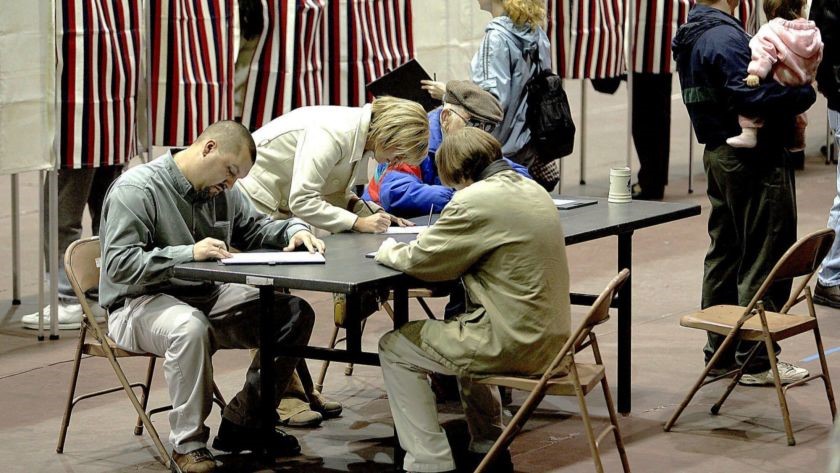
Dodge City Latino Voters Cast Ballots.
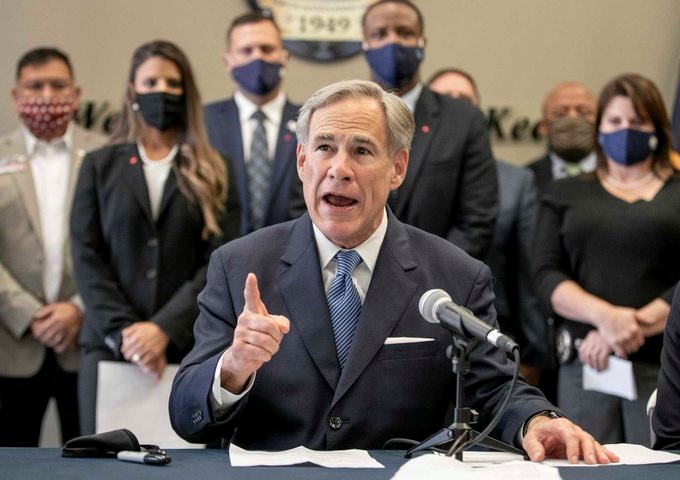
We see the same thing happening for instance in Texas where Governor Greg Abbott has allocated one drop-off box per county — “a move, he said, that would protect the integrity of the elections and stop illegal voting.” Abbott shutdown satellite locations for Texans permitted to vote by mail. Hehas refused to expand mail-in voting which would assist people anxious about Covid-19 exposure when going to the polls. He did increase early voting by six days, but some in his party sued to prevent that.
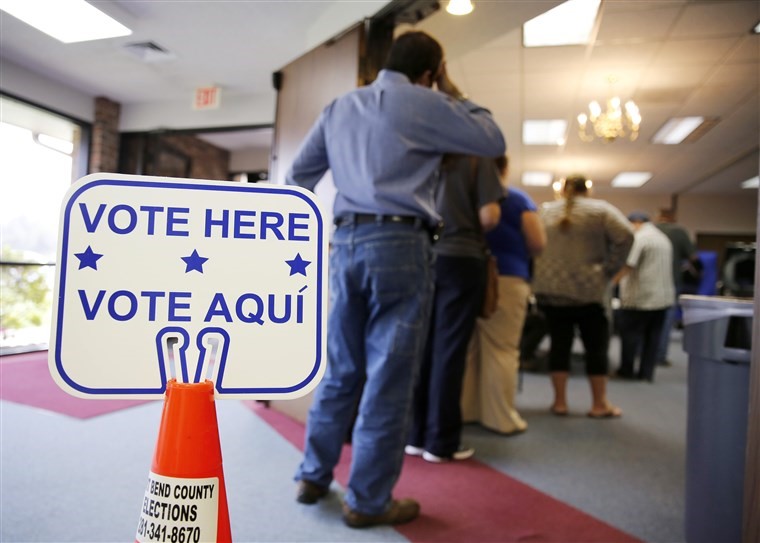
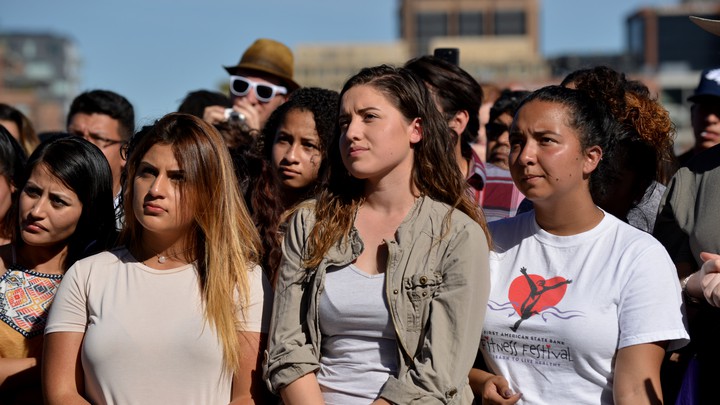
His allocation of one drop-off box per county garnered quick criticism – even a League of United Latin American Citizens lawsuit. Abbott’s decree will have a huge effect in Texas’ large urban counties, like Harris County, the country’s third most populous county. Harris County Judge Lina Hidalgo “slammed the governor’s decision, noting that the county…is bigger than the state of Rhode Island. ‘This isn’t security, its suppression,’” she tweeted. Thomas Saenz, president and general counsel for Mexican American Legal Defense and Educational Fund, claimed “Texas authorities know they are suppressing the vote.” See https://youtu.be/Zna9SrMAhlM. And, it’s not only Texas. Take for example Kansas, Ohio, Georgia–the list goes on.
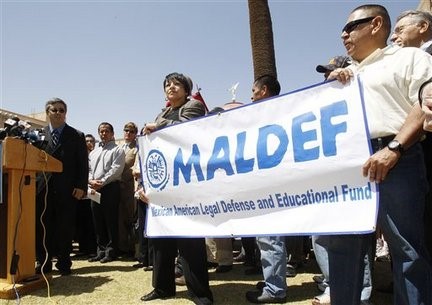
Referring to the 2018 midterm elections, Anderson wrote it was a “war for the soul of America.” That war continues as Latinos and all Americans seek the
RIGHT TO VOTE!
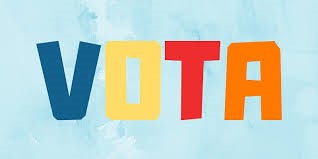
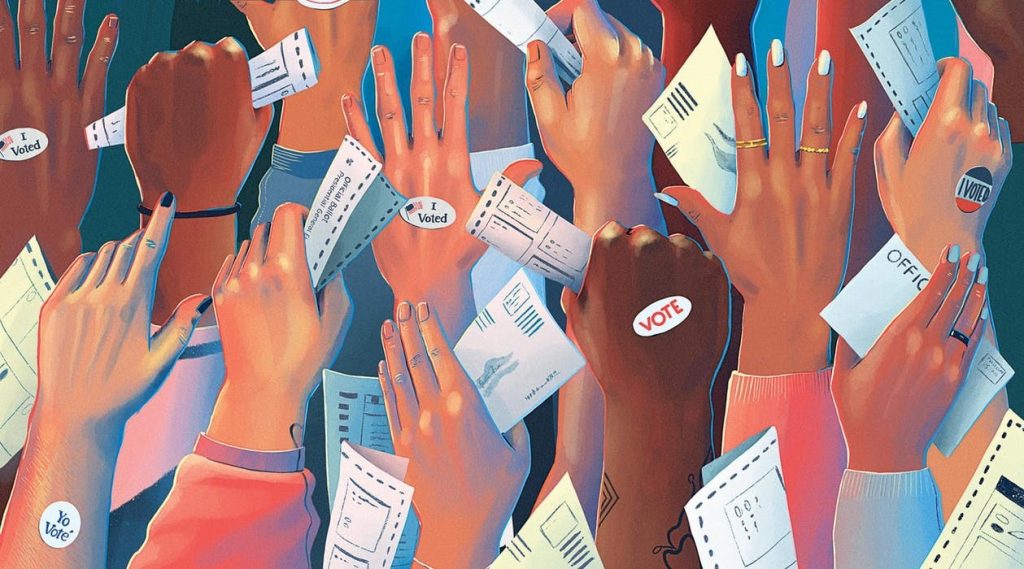
Check out these video links for more information:
America’s Future: The Power of the Latino Vote.
Latino Vote: Dispatches From the Battleground